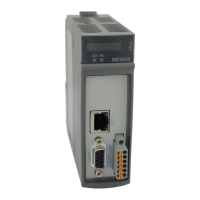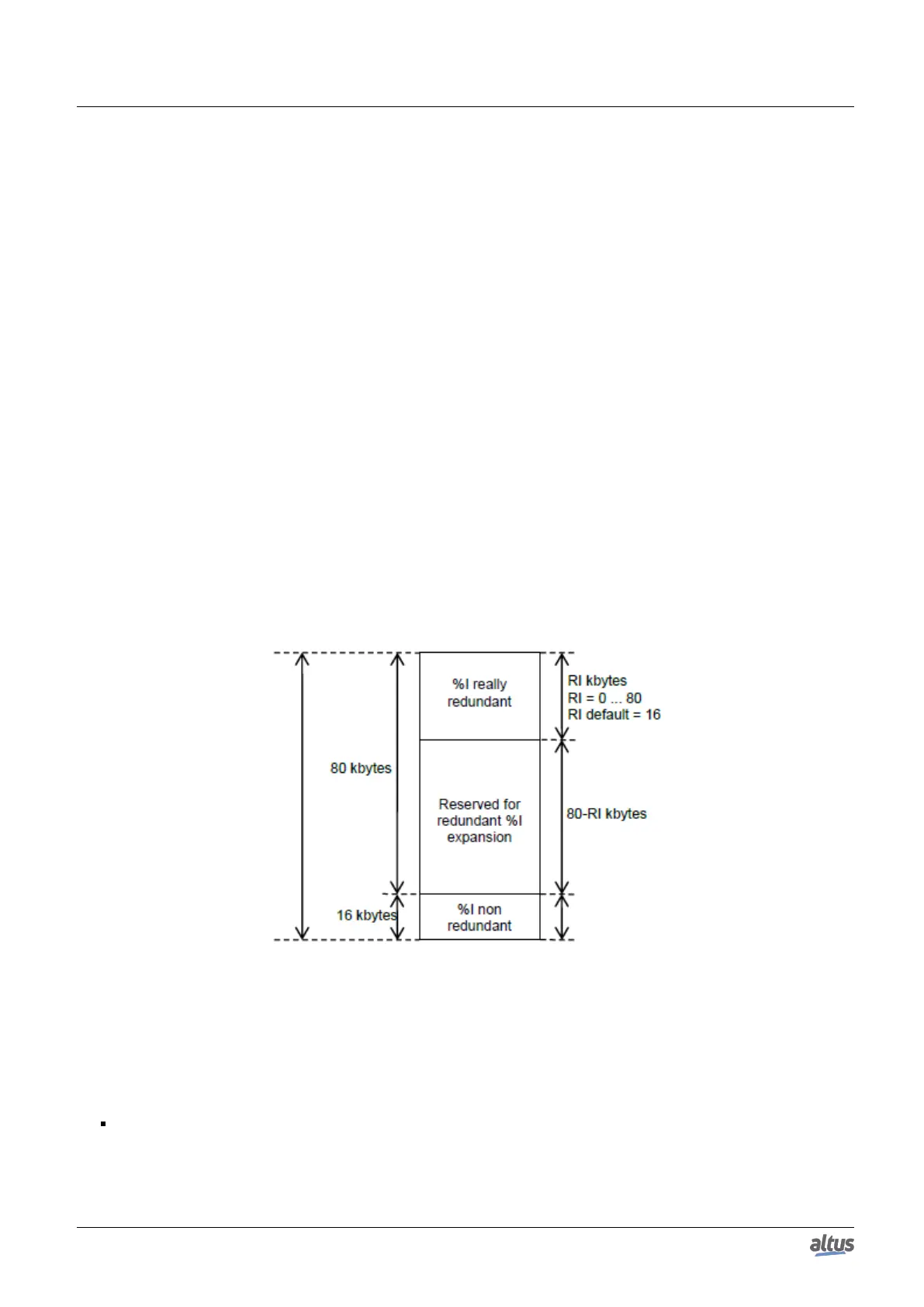6. REDUNDANCY WITH NX3030 CPU
6.3.3.6. Redundant and Non-redundant Variables
The redundant CPU variables can be classified among redundant and non-redundant. Redundant variables are copied from
the Active CPU to the Inactive CPU, at the MainTask beginning of each cycle, through the synchronism channels NETA and
NETB. On the other hand, non-redundant variables aren’t copied between half-clusters, thus can have different values in PLCA
and PLCB.
The non-redundant variables are used to store private information of each half-cluster (PLCA or PLCB), such as module
diagnostics inside the half-cluster, including the redundancy diagnostics (half-cluster diagnostics state, etc...).
The redundant variables regard the shared information connected to the process control. The variables associated to the
I/O modules are typical examples of redundant variables.
6.3.3.7. Redundant and Non-redundant %I Variables
The NX3030 CPU allocates 96 kbytes of %I variables (%IB0 ... %IB98303).
The first 80 kbytes can be redundant (%IB0 ... %IB81919). The last 16 kbytes are always non-redundant (%IB81920 ...
%IB98303).
The 80 kbytes area which can be redundant is allocated for inputs, which can be read from an I/O remote module
(PROFIBUS, MODBUS, etc...).
The 16 kbytes non-redundant area is allocated for a half-cluster “quick private diagnostics”, and also for the redundancy
command panel PX2612 buttons. Quick diagnostics are the ones that must be updated each MainTask cycle.
The user may configure the redundant %I variables quantity, between 0 and 81920 kbytes, in 1 kbyte multiples (the default
value is 16384 bytes - %IB0 ... %IB16383). The proper configuration of redundant %I from %IB0 is important to decrease
the necessary time for redundant variables synchronization (decrease the redundancy overhead). E.g. if the real application
allocates only %IB0 ... %IB1499 for redundant inputs, the redundant %I area size can be defined as 1500 bytes.
The figure below illustrates the redundant and non-redundant %I direct representation variables allocation, where RI is the
%I quantity really configured as redundant.
Figure 170: Redundant and Non-redundant %I Allocation
6.3.3.8. Redundant and Non-redundant %Q Variables
The NX3030 CPU allocates 96 kbytes of %Q variables (%QB0 ... %QB98303). The first 80 kbytes can be redundant
(%QB0 ... %QB81919). The last 16 kbytes are always non-redundant (%QB81920 ... %QB98303).
The 80 kbytes area which can be redundant is divided in two sections:
The first kbytes are reserved for outputs that can be redundant, and are typically allocated for an I/O remote system
(PROFIBUS, MODBUS, etc.). The size value is configurable and its default value is 16384. By default, this section
includes %QB0 ... %QB16383, and can be configured for up to 64 kbytes (%QB0 ... %QB65535).
281

